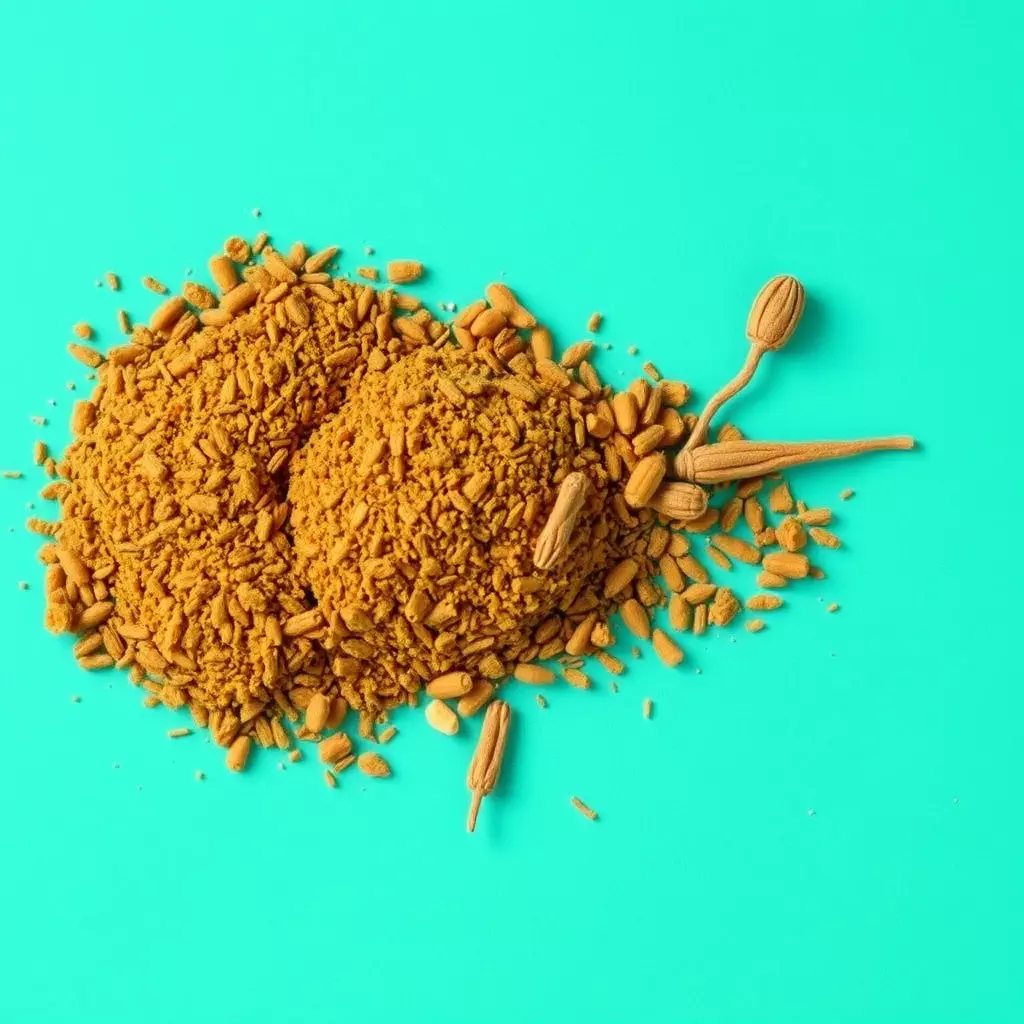Kratom, derived from Mitragyna speciosa leaves, has garnered attention for its potential benefits in inflammation reduction, particularly for athletes dealing with the aftermath of intense training. The alkaloids 7-hydroxymitragynine and mitragynine within kratom are believed to play a role in moderating inflammatory responses, which could enhance athletic recovery by diminishing the cytokines that contribute to inflammation, thus enabling athletes to train more intensely and recover faster. Kratom may also affect pain perception and boost energy levels, factors crucial for maintaining high performance during athletic activities. However, its use in sports is a contentious issue due to regulatory concerns, necessitating responsible use under professional guidance. Athletes interested in incorporating kratom into their wellness regimen for inflammation reduction should consult healthcare professionals to ensure safe and effective usage. The traditional use of kratom for pain relief and energy enhancement can be leveraged by athletes to manage post-exercise soreness and support muscle recovery, but requires careful consideration of dosage and timing to avoid performance disruptions or legal complications. Athletes should approach the integration of kratom into their training regimen with caution, focusing on strains known for anti-inflammatory properties, and with an understanding that individual responses can vary, highlighting the need for a personalized approach based on one's unique physiology and training demands. In summary, while kratom holds promise for inflammation reduction in athletes, its use should be carefully managed within the context of athletic performance and recovery strategies, with adherence to legal regulations and consistent monitoring of health impacts.
Exploring the intersection of natural supplements and athletic prowess, this article delves into how kratom coaching can optimize performance for athletes. By examining inflammation reduction with kratom, we uncover its potential to enhance athletic capabilities while facilitating robust training and recovery regimens. Athletes seeking an edge can benefit from a tailored kratom approach, which this article outlines in depth across its sections on unlocking potential, crafting regimens, and ensuring safe and effective use for peak performance and well-being.
- Unlocking Athletic Potential: The Role of Kratom in Inflammation Reduction and Performance Enhancement
- Crafting a Kratom Regimen for Optimal Sports Training and Recovery
- Strategies for Safe and Effective Kratom Use Among Athletes, with Emphasis on Anti-inflammatory Benefits
Unlocking Athletic Potential: The Role of Kratom in Inflammation Reduction and Performance Enhancement

Kratom, a plant-based supplement derived from the leaves of Mitragyna speciosa, has garnered attention in various health and wellness circles, particularly for its potential role in inflammation reduction with kratom. Athletes seeking to optimize their performance often encounter inflammation as a byproduct of intense training and competition. Chronic inflammation can hinder recovery and limit athletic potential. Kratom contains alkaloids such as 7-hydroxymitragynine and mitragynine, which are believed to modulate inflammatory responses. By potentially reducing the cytokines responsible for inflammation, kratom may contribute to a more conducive environment for recovery, thereby enabling athletes to train harder and recover faster. This inflammation reduction with kratom could be a game-changer for athletes aiming to enhance their endurance and strength, ultimately leading to improved performance on the field or in the gym.
Furthermore, the benefits of kratom extend beyond mere inflammation reduction. It is also purported to influence pain perception and increase energy levels, both of which are critical for athletic prowess. The stimulating effects of certain kratom strains may help athletes sustain high levels of focus and endurance, crucial during prolonged training sessions or competitive events. While the use of kratom in sports is a subject of ongoing debate and should be approached with caution due to its regulatory status in various regions, its potential role as an adjunct to training regimens, when used responsibly under professional guidance, merits attention for those looking to unlock their athletic potential. It is imperative that athletes considering kratom as part of their wellness routine consult with healthcare professionals and adhere to recommended dosages to ensure safety and efficacy in their performance enhancement efforts.
Crafting a Kratom Regimen for Optimal Sports Training and Recovery

Integrating kratom into an athletic regimen can be a nuanced approach, requiring careful consideration to optimize sports training and recovery. Kratom, derived from the leaves of Mitragyna speciosa, has been traditionally used for its potential pain-relieving and energizing effects. When crafting a kratom regimen for athletes, the focus should be on strains that are known for their anti-inflammatory properties, which can aid in reducing inflammation—a common issue among those who engage in regular, intense physical activity. For instance, certain kratom varieties, particularly those with higher alkaloid content such as Mitragynine and 7-Hydroxymitragynine, may offer significant benefits in managing post-exercise soreness and promoting muscle recovery. Athletes should also be mindful of the timing and dosage of kratom intake to align with their training schedule and ensure it complements rather than interferes with their performance. Proper monitoring and consultation with a healthcare provider or a kratom coach trained in athletic performance are essential to tailor the regimen to the individual’s needs, ensuring safe and effective use for both training enhancement and recovery support.
Incorporating kratom as part of a holistic sports recovery strategy can be beneficial, especially when it comes to inflammation reduction with kratom. However, it is crucial to approach its use with caution and scientifically grounded information. The anti-inflammatory effects of kratom can be harnessed to alleviate the discomfort associated with muscle strains, tendinitis, or other sports-related injuries. Additionally, some athletes report improved mood and mental clarity when using kratom, which can positively influence performance by enhancing focus and reducing stress. It is important for athletes to experiment with different strains and dosages under professional guidance to find the most effective combination for their unique physiology and training demands. This personalized approach can lead to a more effective inflammation reduction with kratom, ultimately contributing to better athletic performance and faster recovery times.
Strategies for Safe and Effective Kratom Use Among Athletes, with Emphasis on Anti-inflammatory Benefits
Athletes are constantly seeking ways to optimize their performance and recover more effectively between training sessions and competitions. Kratom, a plant-based substance derived from the leaves of Mitragyna speciosa, has garnered attention for its potential to aid in both aspects, particularly through inflammation reduction with kratom. To harness kratom safely and effectively, athletes should approach its use with a strategic framework. Firstly, it’s crucial to understand the specific strains of kratom and their distinct alkaloid profiles, as these can influence performance and recovery differently. For instance, strains rich in 7-hydroxymitragynine, such as Maeng Da, are known for their potent anti-inflammatory properties, which can be beneficial for reducing inflammation associated with exercise-induced damage.
When incorporating kratom into an athletic regimen, dosage and timing are pivotal factors to consider for optimal outcomes. Athletes should start with a low dose to gauge their individual response before gradually adjusting the amount according to their body’s needs and the severity of inflammation. Additionally, the timing of kratom intake must be aligned with an athlete’s training cycle; consuming it post-exercise can aid in muscle recovery by mitigating inflammation and pain, which is often a barrier to consistent training. It’s also essential to adhere to local laws and regulations regarding the use of kratom, as its legality varies across regions. Regular monitoring of health indicators is necessary to ensure that kratom use does not interfere with performance or lead to adverse effects. By integrating kratom into a comprehensive training and recovery program, athletes may find that they can maintain peak performance while minimizing the risk of injury-related downtime.
In conclusion, integrating kratom into a sports regimen holds promise for athletes seeking inflammation reduction and enhanced performance. The strategic use of kratom as detailed in the sections on inflammation reduction with kratom, crafting a kratom regimen, and safe kratom use, can contribute to both training intensity and recovery efficacy. Athletes are encouraged to approach this natural compound with caution, adhering to guidelines for optimal benefits. By understanding the anti-inflammatory properties of kratom and how to incorporate it into their routines, athletes can potentially unlock their full potential while minimizing the risk of injury and promoting faster recovery times. As research continues to evolve, so too will the understanding and application of kratom in sports performance optimization.






